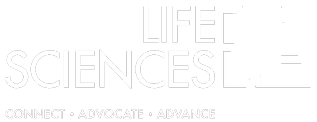 By Lisa Weston, CWC, CWPC
By Lisa Weston, CWC, CWPC
Director of Employee Wellness Promotion
the bagnall company, a UBA Partner Firm
More than 75 cents of every health care dollar spent in the United States goes toward treating chronic diseases such as arthritis, asthma, cancer, cardiovascular disease, and diabetes, according to the Centers for Disease Control and Prevention. Because these conditions are the No. 1 cause of death and disability, and consequently the primary factor in rising health care costs, moving toward prevention-based care will be the key that helps both employers and employees pull health care costs back from the edge of crisis over the long term.
According to the 2013 UBA Health Plan Survey of nearly 11,000 employers, 19.2% of all insurance plans offer some sort of wellness program. Health Risk Assessments (HRAs) remain the most popular offering with 81% of plans participating, 62.3% offer incentive awards (a 3.1% decrease), 61.3% offer a physical exam (a 1.1% decrease); the programs that saw the biggest increase were coaching at 56.2% (a 4.9% increase) and online wellness portals at 54.7% (a 4.7% increase).
The questions are whether comprehensive wellness programs are effective and how are results measured?
Whether or not a wellness program is effective depends on many factors, and most importantly, the organization’s goals. Typically, a wellness program is trying to increase employee engagement and productivity, while lowering long-term costs.
For all employers with wellness programs, the goal is to meet the needs of the employees to impact their overall health. In order to measure effectiveness, keep track of everything. Track participation in all events, onsite education, and challenges. Track cost per person, and most importantly, total population participation. Track progress and participation from year to year to see the overall impact of the program. Also, develop the wellness program around the medical claims trends. If available, use Health Risk Assessment (HRA) data and biometric data, as well.
How wellness programs impact productivity is difficult to measure, but not impossible. Return on investment of wellness related to worker productivity can be determined primarily with the utilization of an employee HRA that addresses the following four areas:
- Absenteeism (work time missed): Percentage of work time missed due to health problems or a specific condition.
- Presenteeism (reduced on-the-job effectiveness): Percentage of impairment while working due to health problems or a specific condition.
- Work productivity loss (absenteeism plus presenteeism): Percentage of overall work impairment due to health problems or a specific condition.
- Activity impairment (other than work): Percentage of activity impairment due to health problems or a specific condition.
Implementing an HRA and having employees self-report how their health problems or specific conditions impact these four areas will provide employers with a method to determine the impact wellness has on productivity. Furthermore, the utilization of the HRA allows for employers to obtain aggregate reporting specific to productivity and participation.
Unfortunately, not all employers wish to implement an HRA campaign. Without having HRA data available, determining the impact wellness has on productivity is very difficult.
As previously mentioned, the key to finding value in developing a wellness program is ensuring the program has offerings and programs in which employees actually want to participate. Careful planning is essential. Employers must assess employee’s needs with an HRA or biometric data and also assess their wants with interest and incentive surveys. The question each employer should ask themselves is “What target am I trying to hit?” Then they should plan their program accordingly.
For further information about wellness trends, download a copy of the 2013 UBA Health Plan Survey Executive Summary http://bit.ly/PSEFrx.








 Many group health plans will need to be amended to reflect the required changes to benefits and waiting periods that take effect in 2014. Employers also should consider whether eligibility language will need to be updated to reduce the number of hours the employee must work to be eligible, to address look-back periods, and/or to base eligibility on actual hours worked instead of the “regularly scheduled to work” standard that is common now.
Many group health plans will need to be amended to reflect the required changes to benefits and waiting periods that take effect in 2014. Employers also should consider whether eligibility language will need to be updated to reduce the number of hours the employee must work to be eligible, to address look-back periods, and/or to base eligibility on actual hours worked instead of the “regularly scheduled to work” standard that is common now.
 By Lisa Weston, CWC, CWPC
By Lisa Weston, CWC, CWPC